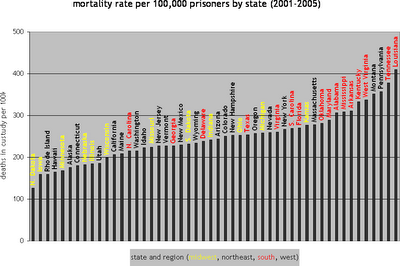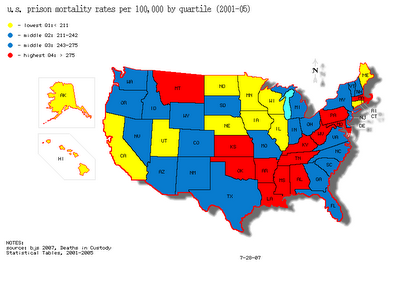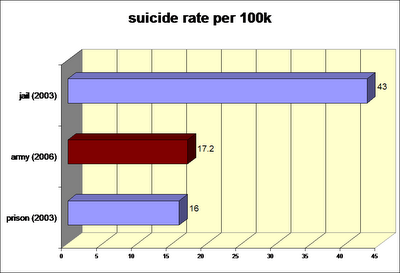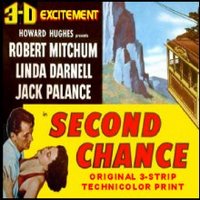while prison is a bad place to live, it is an even worse place to die. if you spend much time talking with inmates, it won’t be long before you hear the phrase, “i don’t want to die in prison.” long sentences and an aging inmate population, however, suggest that rates of prison death are likely to rise in coming years. of course, the vast majority of inmates will ultimately be released to their communities. nevertheless, the specter of dying behind bars is likely becoming more realistic.
if you want to learn more about this phenomenon, the amazingly efficient professionals at the bureau of Justice statistics have developed a useful new deaths in custody site. according to bjs, there were about 15,308 deaths in state prisons from 2001-2005, with illness listed as the cause in most (12,630) of them.

the prison mortality rate ranges from 126 per 100,000 prisoners in north dakota to 410 in louisiana. after looking at the state list, i was taken by the strong geographic patterning of prison mortality. in particular, midwestern states tend to have far lower prison mortality rates than southern states.
i’m not sure to what extent this pattern can be attributed to differentials in sentencing practices, health care, or the sociodemographic characteristics of inmates, but there is strong evidence for some sort of regionalization.
the map below is based on the interquartile range for the state mortality data, with the lowest quartile (fewer than 211 deaths per 100k) shaded yellow and the highest death quartile (more than 275 deaths per 100k) shaded red.
 a contiguous line of states from pennsylvania to louisiana and back up to kansas has death rates in the top quartile, whereas a clump of states in the upper midwest all show far lower death rates. this map bears some resemblance to overall incarceration patterns — with maine and north dakota anchoring one end of the distribution and louisiana the other.
a contiguous line of states from pennsylvania to louisiana and back up to kansas has death rates in the top quartile, whereas a clump of states in the upper midwest all show far lower death rates. this map bears some resemblance to overall incarceration patterns — with maine and north dakota anchoring one end of the distribution and louisiana the other.
note that these statistics do not consider executions. had these been added to the prison death numbers, there would be even stronger evidence of a southern death belt. or, more positively, of a life belt elsewhere. only twelve states are without a death penalty on the books, but eight of these (north dakota, iowa, rhode island, hawaii, minnesota, alaska, wisconsin, and maine) fall into the lowest quartile for prison death rates. of the six states with the lowest prison death rate, none have a death penalty.
the above pattern of results suggests to me that executions and life sentences are complements rather than substitutes. states that categorically refuse to kill prisoners are less likely, rather than more likely, to let them die in prison.
 this week, we are welcoming a wonderful new cohort of graduate students to the department and our community. as a sociological criminologist, they sometimes ask me about the relative safety of various neighborhoods. usually they ask me such questions immediately after they have signed a long-term lease.
this week, we are welcoming a wonderful new cohort of graduate students to the department and our community. as a sociological criminologist, they sometimes ask me about the relative safety of various neighborhoods. usually they ask me such questions immediately after they have signed a long-term lease.









